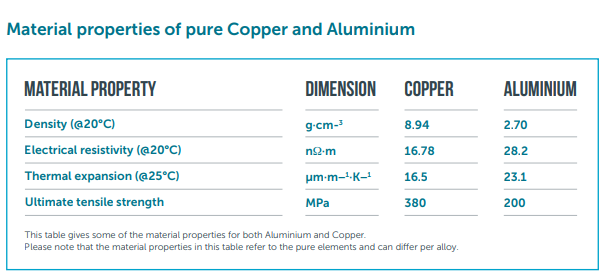AI and Cu are the two most commonly used materials for conductors in transformers,there has always been comparisons made. Cu has been the preferred metal, when it comes to windings in distribution transformers. As a conductor of electricity, Copper is an essential component in a wide range of electrical equipment and systems. Its high electrical conductivity and low resistance make it ideal for applications.
Advantages of Copper Windings
- Copper’s higher tensile strength has traditionally made it the preferred choice for power class I and II transformers with circular disk windings.
- Copper can carry almost twice the current capacity of aluminium, which makes them slightly smaller in size than aluminium wound transformers.
- Cu windings strong short-circuit resistance
- The smaller size of copper transformers reduce the cost of the magnetic steel, tank and oil used but this does not make them more competitive than their aluminium wound counterparts.
Advantages of AI Windings
- Aluminium costs a lot less than copper and thus brings commercial advantages.
- Aluminium has a very thin layer of oxides on the surface, which stops air and water getting to the metal, resisting corrosion.
- Although the conductivity of copper is stronger, pound for pound aluminium proves to be almost double as effective a conductor.
- Aluminium is more flexible than copper making it easier to wind in production processes.
- The higher resistivity of aluminium gives inherently lower eddy losses

What factors should I consider when choosing between copper and aluminum conductors for my project?
Consider electrical conductivity, cost, weight, corrosion resistance, thermal conductivity, and environmental impact when making your decision.
